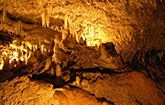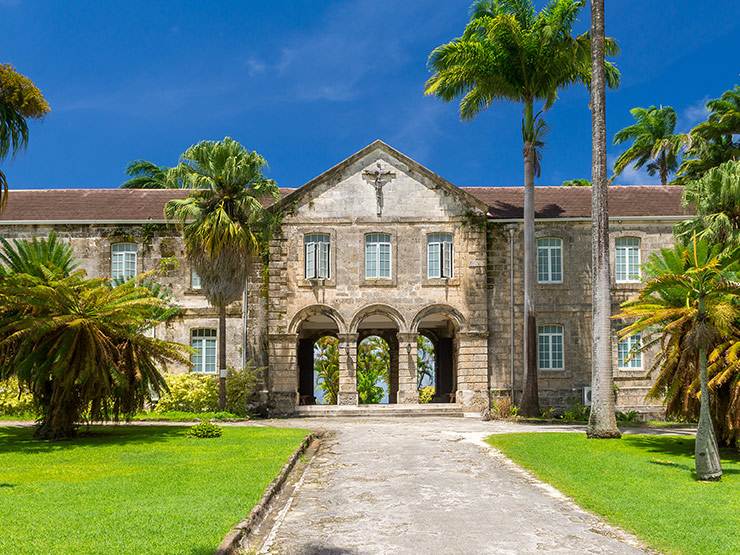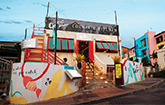|
St. PeterAs per the same way in which the parish of St. Lucy stretches from Barbados' East Coast to the West Coast, so the same for the parish of St. Peter as it also carries a similar stretching action.
Within its environs, there is a town classified as the second (2nd) largest town on the island: it is called Speightstown. It was settled in 1630 and named after a gentleman and landowner by the name of William Speight, after whom the town has been named. In its heyday, back in the 17th century, Speightstown was considered a thriving port and was an important link in the island's trading activities. While it cannot lay claim to that position today in the 21st century, Speightstown still bustles with activity and is very busy. In terms of financial representation, almost all of the major commercial banks lie within the vicinity of the town and most major transactions, including loan enquiries can be conducted at any of the locations.
The art of fishing still plays an important part in the lives of Barbadians and in every parish, there is a fishing village which adds life, character and economic input to the persons who live in the village and those who pass by to patronize. One such village is Six Men's in St Peter, which is just north of the second largest town in Barbados, Speightstown. If driving along the main coast road, having left Speighstown and before reaching the intimate Fish Pot restaurant, a group of fishing boats and fishermen may be observed by the water's edge. That is Six Men's Bay.
Arlington House is a historical museum which is located in the heart of Speightstown, St. Peter in Barbados. The house itself is an eighteenth (18th) century building and contains three (3) separate floors of various displays and artefacts and items, all representative of some aspect of Barbados' history.
After paying the entrance fee to enter the Farley Hill National Park in St Peter, Barbados one might at first glance wonder what all the fuss is about. Truth be told, this Park was once the site of an elegant stone mansion built by Sir Graham Briggs. In fact, the history books indicate that the property was so extensive and the desire for precision in design was so exacting that the building for which construction started in 1818, was not fully completed until some fifty (50) years later. Many years later in 1965, this magnificent building was unfortunately destroyed by fire and was subsequently transformed into a national park. It may safely be assumed that the cost to re-construct may have been considered far too extravagant or prohibitive for the owners at that time. The gutted remains of the main house remain however and lend distinct character to the surroundings of this vast park. Persons can feel free to wander around the ruins, but walking through or playing in it is not encouraged.
St. Nicholas Abbey of St. Peter, Barbados and Drax Hall Plantation, St. George also of Barbados both have something in common. These two properties have historical significance in that they are two of only three (3) remaining Jacobean mansions on this side of the hemisphere, the other being in the USA. St. Nicholas Abbey is a property of considerable magnitude with a rich and colorful history. It starts with the building which was built back in the mid 17th century by a Colonel Berringer as a home for himself and his family. Folklore and some annals state that Colonel Berringer was reputedly murdered by his political rival, a Colonel Yeamans, who apparently was having an affair with Berringer's wife. This story seems somewhat credible as Yeamans married Berringer's widow less than four (4) months after his death. The real saga began there with many twists and turns, propelled mostly by the offspring of the two original gentlemen. Suffice it to say the name was changed to Nicholas Plantation circa 1676 and thereafter to St. Nicholas Abbey in the mid 1800s, a name which has been retained to the 21st century.
A look through our list of attractions throughout the parish of St. Peter will give you a better idea of what this parish has to offer.
00-2
|
Your Ultimate Guide To Barbados
There are so many things to do and see here in Barbados!
View all of our best tours and start your adventure today!
Barbados Pocket Guide
Welcome to the Barbados Pocket Guide, a comprehensive source of information about our island, it's people, culture and life in general. We also have tons of information on places to stay, flights, car hire and tours of the island, all here! Enjoy visiting our site and please feel free to write a comment or send us a message directly with articles you think we need to add.
Things To Do!

Island Safari
Island Safari offers a unique jeep safari experience on our zebra striped, specially designed 4x4 jeeps. Climb on board our comfortable cabs and let us show you what the others leave out, specifically the most scenic locations of the island by travelling on and off the beaten track.

Harrison's Cave
Explore Barbados' underground! At the heart of the island lies a great geological wonder, the magnificent Harrison's Cave. Admire the crystallized, limestone cave, its flowing streams, deep pools and towering columns as you travel by tram or get up close and personal with the Eco-Adventure Tour.

Catamaran Cruise
Lay back, relax and sunbathe as you sail across the calm Caribbean Sea. Explore the crystal clear waters as you swim and snorkel with the tropical fish and majestic turtles. Then, enjoy a scrumptious lunch as you admire the beautiful rolling coastline and sparkling water.

Mount Gay Visitor Centre
Make a stop at the world renowned Mount Gay Rum Distillery and discover the secrets behind Barbados’ finest and most celebrated spirit, in the island where rum was invented! Witness the history of Mount Gay as you journey with them through their rich heritage, proven artisanship and unique taste.

SunTours Special
Grab the SunTours Special with SunTours Barbados and see all the most popular spots in Barbados! Immerse yourself in the interesting history of this island, view the most picturesque scenes and enjoy a delicious Bajan style lunch at a well favoured local spot.

Animal Flower Cave
The colourful walls and the fascinating sea anemones at the Animal Flower Cave draw a crowd, but the amazing pools, some of which are deep enough to swim in, are the real attraction. While here, take a stroll over to the cliffs to feel the refreshing sea breeze and take in the stunning seascape.














